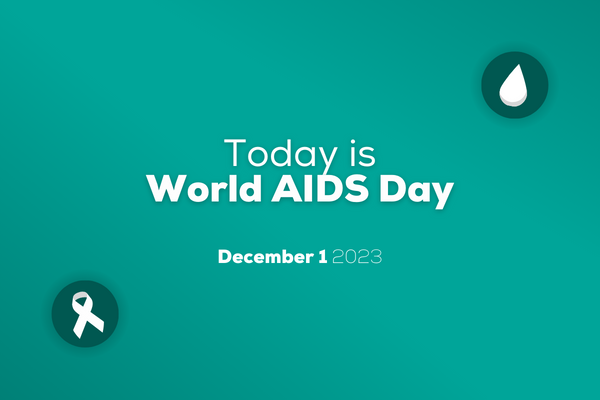What to learn from World AIDS Day?
35 years of commitment to defeat the HIV/AIDS epidemic
Advancements in both prevention and treatment of HIV have contributed to great progress towards the goal of ending the HIV/AIDS epidemic. Today, people living with HIV (PLWH) and treated with antiretroviral (ART) medication can live longer and healthier lives, with limited risk of transmitting the virus to others. This was made possible due to the partnership of non-profit organizations, the medical community, governments and society at large. For 35 years, these organizations increased awareness, funded R&D programs, improved access to clinical care, and supported patients. This collective effort must continue in memory of those who lost their lives, and to safeguard the physical and mental health of people who continue to live with HIV.
Osteoporosis as a co-morbidity to HIV
PLWH are at increased risk for osteoporosis due to alterations in bone metabolism which can occur during virus activity and at initiation of ART treatment which is associated with an increase in bone resorption. Studies have found that HIV-positive patients can have lower bone strength, primarily due to changes in their metabolism and the infection of bone cells. HIV proteins not only increase the activity of osteoclasts, cells that break down bone, but also promote the death of osteoblasts, which leads to reduced bone formation.
As a consequence, there is also an increase in fracture risk, with fractures occurring around 10 years earlier in people living with HIV than in the general population. Research demonstrates that the risk of fracture in PLWH is better captured by assessing both bone mineral density (BMD, a measure of bone mass) and trabecular bone score (TBS, a measure of bone microarchitecture). In particular, it has been shown that PLWH had lower TBS which is associated with vertebral fractures. [1,2]
Monitoring bone loss in patients living with HIV
Osteoporosis risk factors are prevalent in PLWH and should be assessed regularly, regardless of age or sex. Screening for osteoporosis with DXA should be performed in all PLWH ≥ 50 years of age [3]. Clinicians should be aware of the contributors to bone loss in people living with HIV in order to recognize high-risk individuals and to take appropriate steps to address modifiable risk factors to prevent future fractures. Lifestyle modification, changing ART, calcium and vitamin D supplementation, and pharmacologic treatment for osteoporosis can all be employed to address bone loss in this patient group.
It is important to note that specific recommendations must be tailored to individual patient’s health status, regional guidelines, and up to date clinical research. Always consult with a healthcare professional or specialist for tailored advice and management strategies.
- Ciullini, L. et al. Trabecular bone score (TBS) is associated with sub-clinical vertebral fractures in HIV-infected patients. J. Bone Miner. Metab. 36, 111–118 (2017).
- Bedimo, R. J. et al. The Differential Effects of HIV and HCV on Bone Micro-Architecture and Fracture risk. Clin Infect Dis 66, 1442–1447 (2017).
- Biver, E., Calmy, A., Aubry-Rozier, B. et al. Diagnosis, prevention, and treatment of bone fragility in people living with HIV: a position statement from the Swiss Association against Osteoporosis. Osteoporos Int 30, 1125–1135 (2019).

